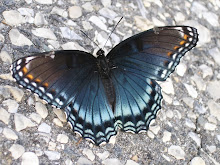[By Stephanie] I've been sick for the past 2 weeks, stomach stuff. They gave me antibiotics, but they didn't work the first round so I'm on another 5 days. At this point, it's not as bad as it was; I just get a stomach ache everytime I eat and I can't eat all the good stuff, like cebiche, until I'm better. Luckily Ixchel has a stomach like a Peruana and Alex is well equipped given his 14 years in Honduras. Of course Ixchel isn't eating cebiche yet, either, although in general she likes the basic foods: potatoes, avocados, rice, quinoa, etc. There's a Peruvian vegetarian restaurant near our house where we go with some regularity. But I guess I got in trouble b/c we've been sampling everything -- how can you resist in Peru! -- in a different restaurant everyday. Oh, and we found an incredible dessert store the other day. It has choclates with pecans and manjar blanco (the caramel-like stuff) inside, to name just one item.
The other day, I was putting away some clothes in my closet and I found that the 4 pairs of shoes I have that I haven't worn here yet (b/c they're for summer, more formal) were COVERED in mold! It looked like some 4th-grade science project gone wild. Seriously, over 2 inches of mold growing all over one pair. Washed everything in bleach and have the closet loaded up with "dehumidifier balls" which will hopefully take care of things. Of course Alex, the physical geographer, assures me that the humidity can't be THAT high here because the air is too cool to hold high amouts of water. He patiently explains to me that San Pedro Sula (Honduras) has higher humidity because the air is warmer. But my clothes dried in SPS and my shoes were never covered in mold! I insist. Consequently, Alex has had to re-think the application of theory to our wet, Lima reality and has finally decided that although absolute humidity is not that high here, relative humidity is: the coolness of the air allows it to be fully saturated and eliminates its drying power. Peruvians (who have all experienced the moldy-shoe phenomenon) look at Alex like he's nuts when he tries to explain relative vs. absolute humidity in Lima.
Ixchel really likes her "nido" (daycare, literally means "nest"), especially Miss Ines, her teacher who's very nice. She's learning lots of words (dato = zapato = shoe), pie (foot), and she said "Miss" a lot after her first week in the nido. On Friday, I'll go on a field trip with her nido to a farm outside of Lima. It's a really nice nido; it's very Catholic as is almost everything here. She's already been parading around the block for one of the thousand religious celebrations they have here (the Miracle Christ on this occasion, as opposed to Christ in his other 100 manifestations that are celebrated). She enjoyed it -- got to wear a purple cape, a little purple Jesus necklace, and walk around outside looking for wow-wows (her favorite activity besides chasing balls of other children in the park...everyone is very nice and lets Ixchel play with their toys). She has picked up some less attractive habits...I'm waiting for "mio" to pop into her vocabulary, but not yet...the other day she spent a whole day sort of whining with her face screwed up for no apparent reason (we were on a nice walk in the park). Soon I realized she was just testing out what she'd seen other kids do in the nido. I nipped this annoying behaviour in the bud very quickly (although, more likely, I think Ixchel just got bored with doing it).
I've been a bit slowed with my illness, but primarily I've been working in the national archives which are located in the Palacio de Justicia (a state building just across from the Sheraton for those who know Peru). I enjoy the dusty documents and think I'm working on some relevant stuff (labor complaints against Nikamatsu Okada, the largest Japanese immigrant landowner in pre-WW II Peru, was deported...trying to see to what degree there was popular protest against different Japanese groups (ie rich/powerful like Okada) and/or if anti-J campaigns were organized by competitors -- other large landowners -- and how all this fed into state policy). Sometimes it's hard to tell how relevant it is when you start. The other problem is that a lot of the 20th c docs are disorganized. I also met with Amelia Morimoto, the most eminent Peruvian writer on the J-Ps. May go to Ica later this month, but I'm a little behind in my planning b/c of the sickness.
Alex is working on articles and applying for some jobs. Luckily it's warmed up so he's not freezing to death. He really likes the food and being in Latin America. Oh! And we went to a play the other night with a friend of Alex' who works for the UN in Peru. Our other friends' niece (she's in her 30s) took care care of Ixchel.



